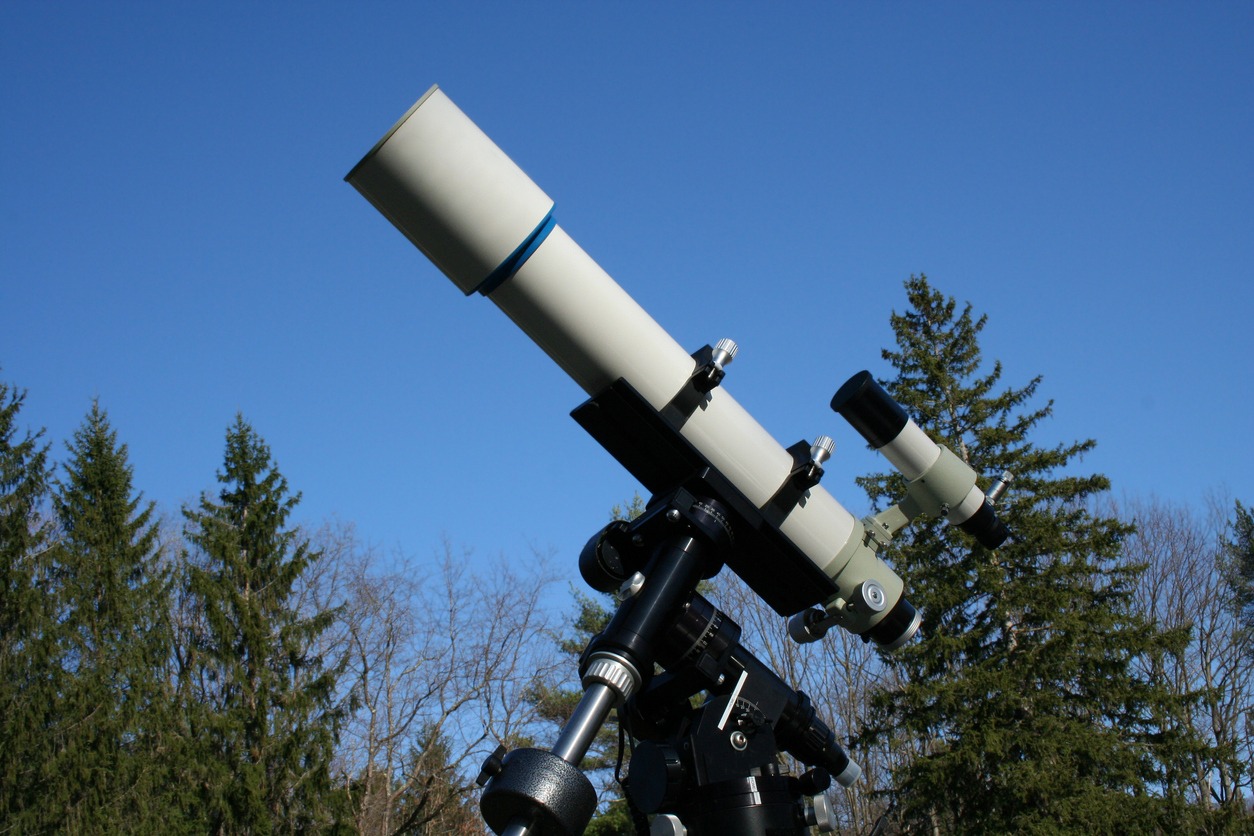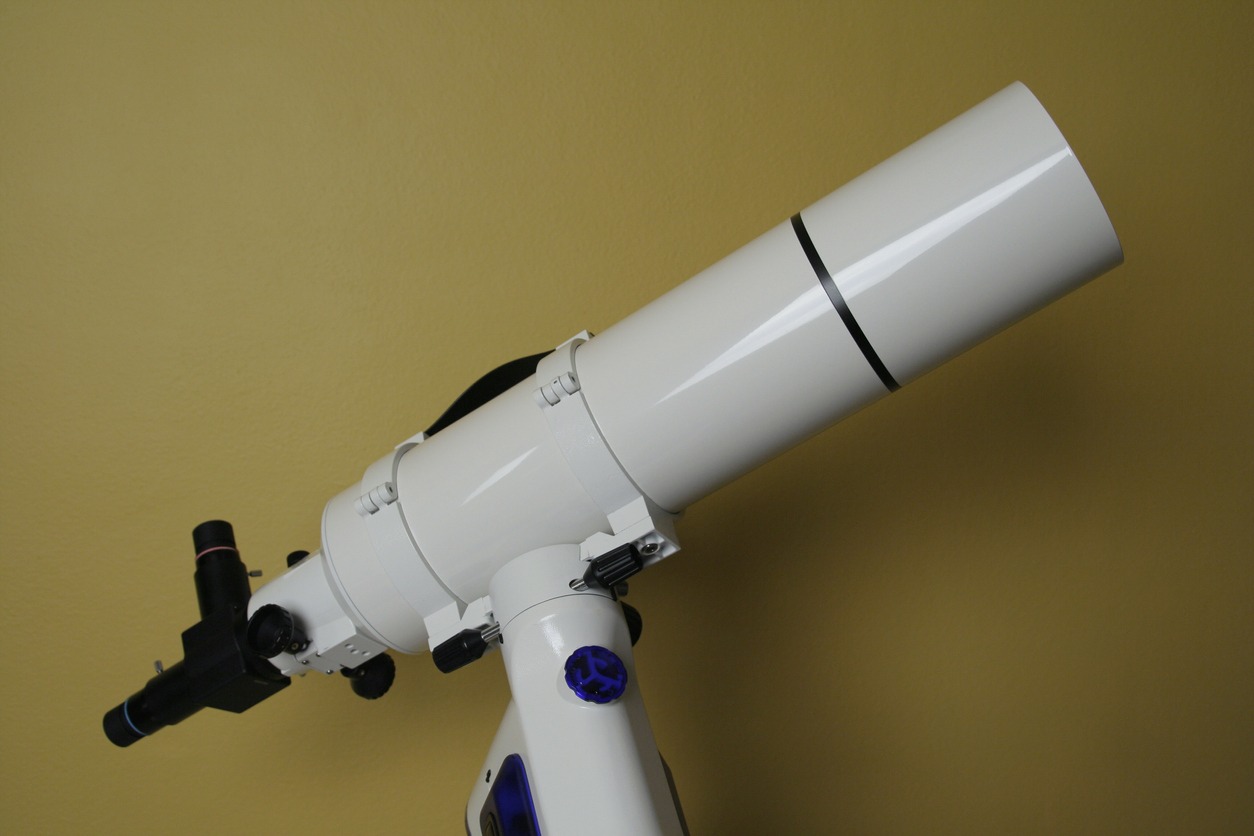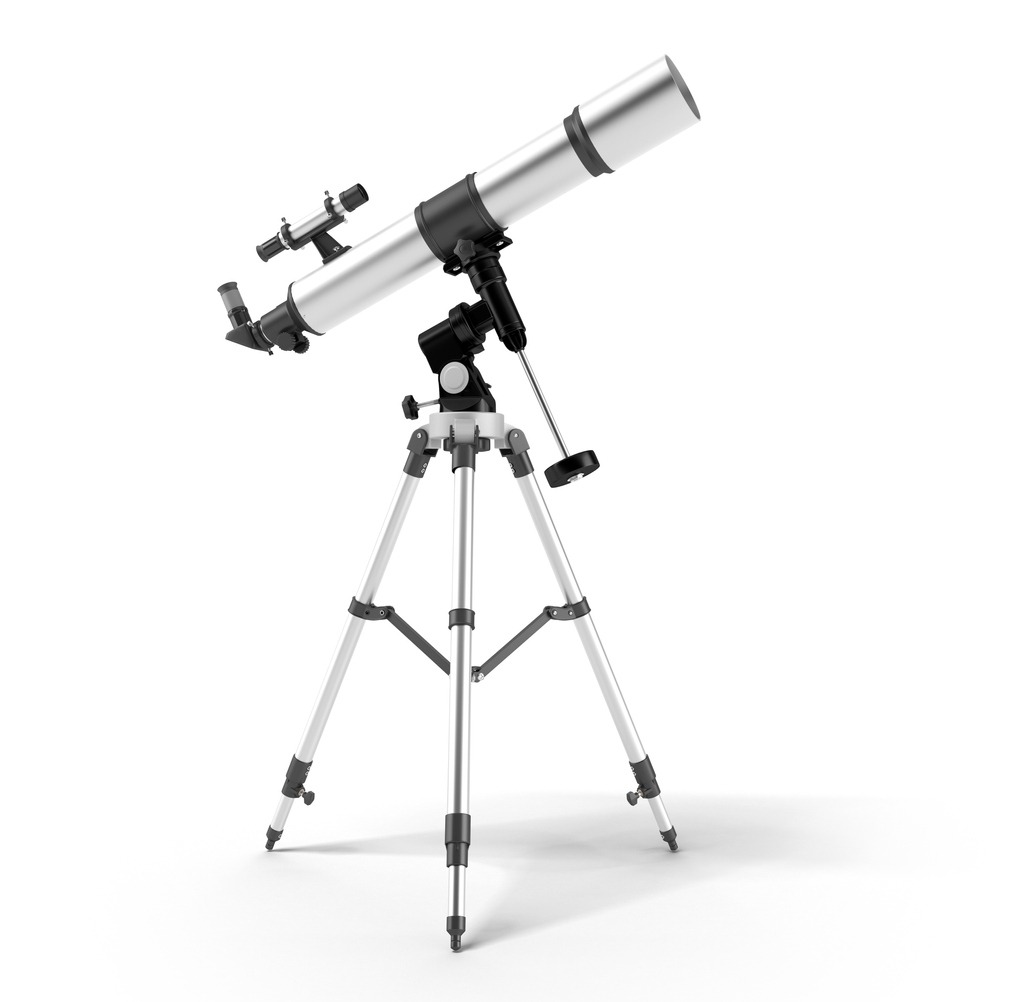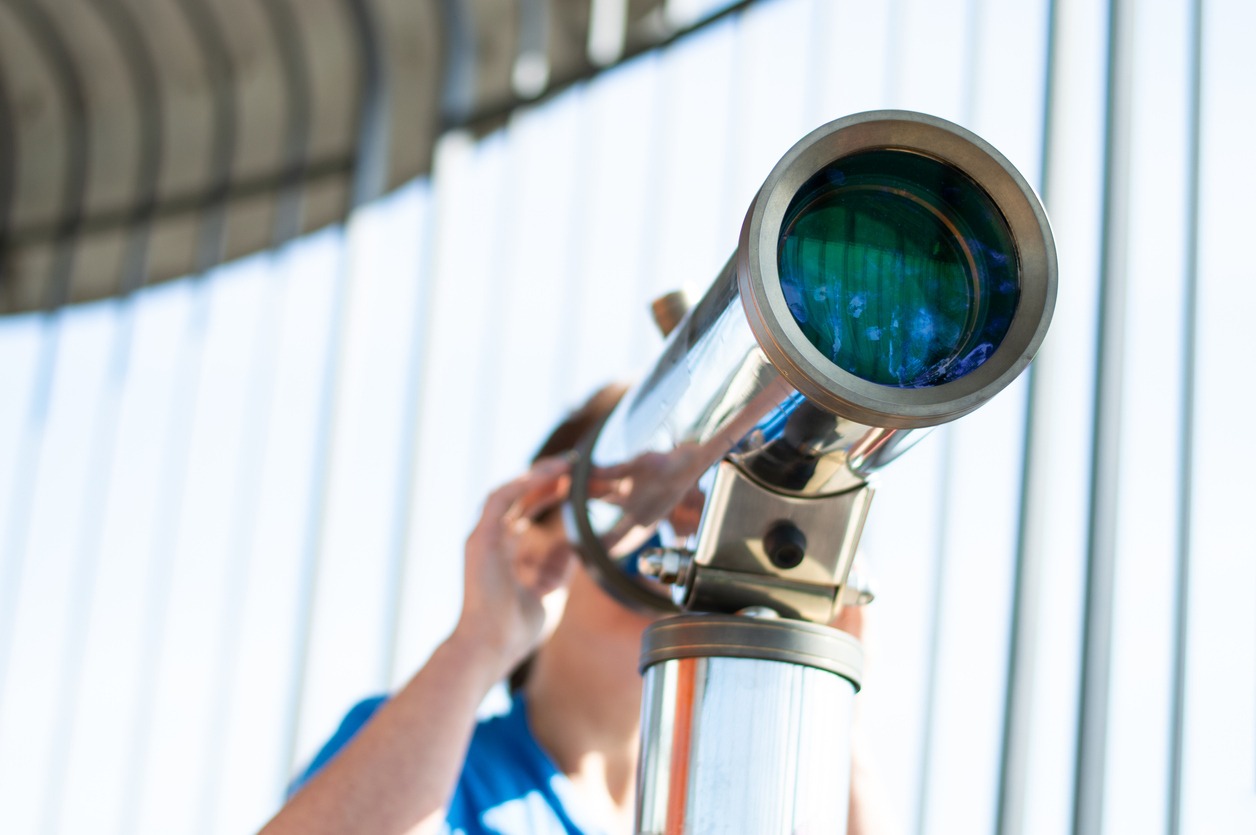Refractor telescopes are among the three main types of telescopes currently available in the market i.e. refractor, reflector and catadioptric telescopes. Refractor telescopes are quite popular as they are generally smaller and more portable than reflector telescopes and more affordable than catadioptric telescopes. These are like a nice middle ground between performance and price. Refractor telescopes have a wide range of applications, making them a useful instrument in astrology and scientific research.
If you are unsure what a refractor telescope is, this guide will provide you with all the basic information, including an overview of its important features. This post aims to help readers determine whether it will fit your needs and the factors you need to look out for when purchasing one.
What Is a Refractor Telescope?
A refractor telescope is an ordinary telescope that uses refractor lenses. These lenses bend or refract light to a certain point, and the point where the light path intersects is called the focal point. The telescope is constructed to have the eyepiece or camera at that focal point.
There are two lenses in a refractor telescope: the objective lens and the eyepiece. The objective lens produces an image of an object far away through light rays. When the light rays from that distant object enter the telescope, it is focused on the eyepiece by the objective lens. The objective lens refracts light which causes the image to be magnified. This means that you can see that far-away object much more clearly.
There are many brands that produce and sell refractors telescopes, and one of the best is Twinstar, which is also known for making affordable telescopes that are great for beginners. To know more about Twinstar, check out our Guide to Twinstar Telescopes.
The Design
A refractor telescope usually has a straightforward design. There is a long tube with a lens at the front and an eyepiece or instrumentation attached to the rear. It is at this rear eyepiece where you can view the object you are looking at.
All refractor telescopes are based on the same principle: the objective lens and the eyepiece work in tandem to gather more light at a single point than the human eye. It then focuses the light, and presents it to you in a manner that makes the object it is pointed at appear brighter, magnified, and clearer. This is all because the objective lens refracts the parallel rays of light coming from distant objects and then converges them to form the image.
Applications of Refractor Telescopes
Refractor telescopes are widely used in astronomy and terrestrial viewing. Many use it to view far-away objects, such as the planets in the solar system. They are also used in astrophotography and conducting research in various fields.
Amateur Astronomy
One of the most common uses of refractor telescopes is in astronomy. It was famously used by Galielo to discover the four largest moons of Jupiter. Those interested in astronomy will significantly benefit from a refractor telescope as they can use it to get a closer look at other planets and learn about them.
Astro-Photography
Since the 19th century, refractor telescopes have also been used for astrophotography as they allow you to get a high-quality image. They are also lightweight and easy to travel with compared to other kinds of telescope designs. This makes them a great option to take pictures of the skyline.
Scientific Research
Since telescopes allow you to look at objects far away, beyond human vision, they aid in discovering objects not visible to the naked eye. Refractor telescopes have greatly helped scientists and astronomers discover new stars, planets, and galaxies. Since the invention of the telescope, a whole new world has opened up for us to view and be amazed by.
Types of Refractor Telescopes
Refractor telescopes come in various configurations that help correct image orientation and aberration. Here are some of the most common types available.
Achromatic Refractor Telescope
Achromatic refractor telescopes were created to fix one of the major issues of regular refractor telescopes, chromatic aberration. This telescope uses an achromatic lens that helps bring two wavelengths into focus at the same plane. The achromatic lens also helped solve the problem of the extremely long focal lengths needed to view your desired object. Using this telescope, you can have shorter focal lengths and still clearly view far-away objects.
Apochromatic Refractor Telescope
An apochromatic refractor telescope uses an apochromatic lens to bring three different wavelengths into a single focus point of the same length. These three wavelengths include red, blue, and green. These telescopes are usually much more expensive than others because they need special materials to manufacture.
Keplerian Refractor Telescope
A keplerian refractor telescope is an improvement of the original Galileo design. It uses a convex lens as an eyepiece instead of a concave one used in Galeilo’s telescope. This change in the lens allows the rays of light emerging from the eyepiece to converge. This enables you to see a much wider field of view and have greater eye relief. The major drawback is that the image you will view will be inverted.
Galilean Refractor Telescope
Galilean refractor telescopes were the original telescopes invented by Galileo back in 1609. This type of telescope has a convergent objective lens and a divergent eyepiece. The resultant image from the telescope is not inverted, as there is no intermediary focus. These telescopes allow you to explore the sky. Galileo himself used it to view the craters on the moon and the four largest moons of Jupiter.
Advantages and Disadvantages of Refractor Telescopes
Refractor Telescopes have many advantages and disadvantages that you should consider before purchasing one.
| Advantages | Disadvantages |
| It produces crisp, high-contrast images that have high magnification. | There is chromatic aberration, which is a distortion occurring due to the different colors of light not focusing on the same point. You may see halos or fringing around bright objects |
| They are easy to use. | More expensive than reflective telescopes |
| These telescopes are smaller and more portable than reflector telescopes and more affordable than catadioptric telescopes | Limited field of view |
Maintenance
For astrology and other purposes, telescopes are invaluable and expensive instruments. Due to this, you should take care of them and maintain them regularly. One of the most crucial parts of a telescope’s maintenance is cleaning it.
When cleaning your telescope, ensure that you do not touch the lens or mirror directly with your hand. If you do so, you may transfer natural oils onto it, which you will later need to clean.
The best way to clean your telescope is by using compressed gas, lens tissue, or surgical cotton. You can also use a solution to clean it thoroughly. Ensure you wipe it in circles to avoid any streaking.
Additionally, ensure that your telescope is not exposed to dust, heat, and/or moisture, as it can cause damage. Always keep your telescope secure in proper storage and cover the lenses when the telescope is not in use.
Things To Consider When Purchasing a Refractor Telescope
As telescopes are a major investment, it is vital that you pick the correct one based on your needs. Depending on what you will be using your telescope for, you need to be aware of all the essential features so that you can choose the perfect one. Here are some factors that you should take into account when picking a refractor telescope.
Refractor Versus Reflector
Of the many different telescopes available on the market, refractor, and reflector telescopes are the most common. A refractor telescope uses two lenses, the objective, and the eyepiece. Of these two, the objective lens is the larger, and the eyepiece is the smaller (also in terms of the focal length).
On the other hand, a reflector telescope is designed to gather light at its bottom. To do so, it uses a concave mirror, which is the primary lens of reflector telescopes. In such telescopes, when the light from a distant object enters the telescope, it is reflected off the mirror and then focused onto the secondary mirror. From here, the light is directed to an eyepiece. The degree to which the light is reflected depends greatly on the shape and curvature of the primary mirror.
Aperture Size
The aperture size of a telescope is the diameter of the objective lens of a refractor lens and determines the power of the telescope. The size of your telescope’s objective lens is proportional to its ability to gather light. The more light your telescope can gather, the better the image will be. Although it may be tempting to purchase an extremely powerful telescope, keep in mind that the larger the objective lens, the larger and heavier your telescope will be.
Focal Length
The focal length of a telescope is the distance between the objective lens and the point of focus. When purchasing a telescope, it is crucial that you consider the focal length, as it is a factor that determines how much the object will be magnified. If you want to figure out the magnification using the focal length, divide your telescope’s focal length by your eyepiece’s focal length.
Telescope Mount
A telescope mount holds the device steady, so that you can easily view your object. To many, a telescope mount may seem like an accessory, but in actuality, it is just as important as other parts, such as the tube and optics. If you don’t have a mount, your telescope will wobble, and even the slightest wobble can make it impossible to view a distant object.
When purchasing a telescope, you will come across two main types of mounts, including altazimuth and equatorial. An altazimuth mount is similar to a camera tripod and allows you to move the telescope back and forth and up and down.
Equatorial telescopes are more complex as they are constructed to follow the movement of the object you are viewing. Some even come with a motor drive that follows the earth’s rotation, which allows you to keep the object in view for longer.
Accessories
To make the most out of your telescope, you should invest in some accessories that will allow you to get more use out of your device. Here are some essential accessories that every telescope owner should consider purchasing.
Eyepieces
Telescope eyepieces are very useful for telescope owners, and many different kinds can be used for various purposes. Some common ones include the Kellner eyepieces, arthroscopic eyepieces, and a panoptic eyepiece.
The Kellner eyepiece is a three-element design, meaning it has three lenses and is excellent for correcting aberrations. These lenses have a standard field of view, but cannot be used on telescopes with shorter focal lengths.
An Orthoscopic eyepiece has four well-corrected lenses with a standard FOV of 45 to 52 degrees. Panoptic lenses have six elements and have an excellent FOV, meaning that the images they deliver are crisp and high quality. They are pricier than others but are definitely worth the splurge.
Barlow Lenses
Barlow lenses differ from eyepieces as they fit between the eyepiece and the objective lens. They can double or even triple the magnification. These lenses are powerful and are sometimes the only extra eyepiece you will need for your telescope.
Filters
Many telescope owners question the importance of filters. Still, in reality, they are important as they help enhance the color of your image, make features pop out, and improve overall visibility. Filters can also cut out glare and make the image look crisp. There are various kinds of telescope filters available on the market, including LPR, color, and lunar filters.
LPR filters are light pollution reduction filters and are perfect if you live in a city. As street light emits specific wavelengths, an LPR filter significantly reduces these wavelengths, allowing you to have an improved image.
If you use your telescope to view the solar system, then a color filter can help you bring clarity to your images. For example, blue filters are suitable for bringing clarity to Jupiter, Mars, and Saturn. You can even stack different colored filters together for surprising outcomes.
FAQs
What is the problem with refractor telescopes?
One of the biggest issues with refractor telescopes is chromatic aberration. It is a common optical problem that occurs when different wavelengths of light pass through a lens and are not brought to focus on a single point. This causes a colored fringe or halo to appear around the object you are trying to view.
Can I use a refractor telescope to look at Mars?
Yes. You can use almost any telescope to look at Mars, but the bigger the aperture of the telescope, the better the final image will be. If you want to see Mars, you will need a telescope that has an aperture of at least 60mm. This will allow the telescope to gather enough light to view the planet clearly. Additionally, you will want to ensure that the optics in your telescope are of the highest quality to reduce optical aberrations, such as chromatic aberrations, as they can degrade the quality of the image produced.
Are refractor telescopes suitable for beginners?
Yes. An entry-level refractor telescope is an excellent choice for beginners as they can use it to observe the sky and many celestial bodies.
Conclusion
Telescopes are an essential tool that can be used by astronomers and researchers alike to look at objects far away and study them. There are many different types of telescopes. The refractor telescope is widely used because of its lightweight nature and clear images. If you are in the market for a telescope, it is important to consider the important features and specifications as well as how to keep your telescope maintained and safe.






